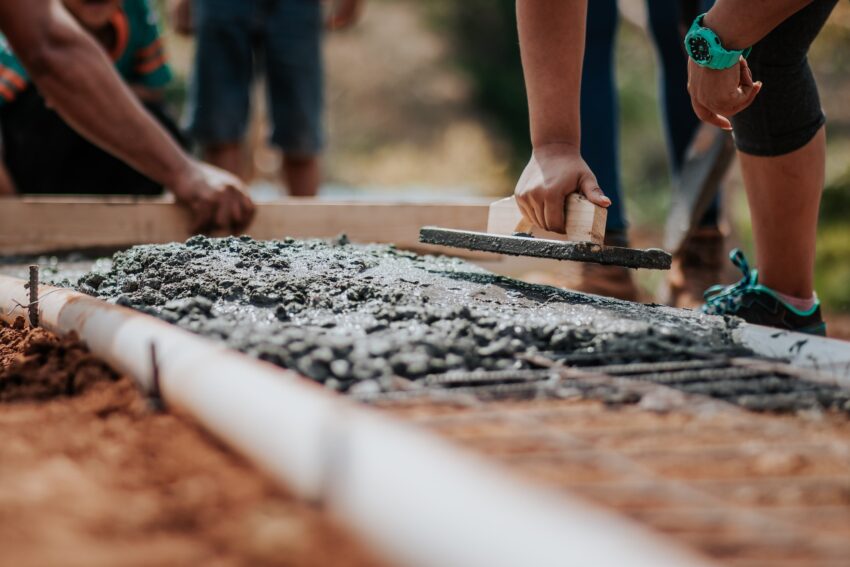When designing a foundation for a home, understanding the different types of concrete is crucial. Whether the material is made from soil or concrete, residential designers and concrete foundation contractors Belton TX must understand the differences in composition and structural properties between the different types of concrete. Here are some important highlights about concrete foundations. Choosing a type of foundation is important because of its long-term effect on the home’s structure.
Poured Concrete Foundation
A poured concrete foundation provides high structural strength, and the walls can last for decades. They are stronger than regular concrete blocks and resistant to termite damage. However, there is a risk of cracking, which can let moisture through. Cracks in a poured concrete foundation can be difficult to detect, and they can lead to structural damage over time. The foundation can also sink due to collapsing soil.
Poured concrete foundations are a good choice for those concerned about the safety of their homes. It has several advantages over block foundations, including the ability to withstand unnatural land shifts, fire protection, and water damage. The walls of a poured foundation also feature a joint-free construction, which reduces the risk of water seeping through the concrete and leaking into the basement. In addition, because poured concrete is solid, it protects against walls more effectively than hollow-core concrete blocks. It is also fire-resistant, which helps to contain the fire in a house.
Monolithic Slab
A monolithic slab is a concrete foundation that provides a single-member structure. It is poured in one piece without needing stem walls or other supports. This structure provides the required strength and stability for a home. In addition, it is easier to build than stem walls because all of the concrete is poured together.
Monolithic slabs are ideal for lots with a flat topography or small slopes. However, they can cause major problems if certain conditions aren’t met. For example, if the ground is not compacted well, the slab is likely to crack and cause structural problems. Monoslabs also tend to have cracks around perimeter walls, affecting flooring and drywall.
Pile Foundation
The design of a pile foundation is an important component of a building’s structure. The process begins with an interpretation of site geotechnical data. Next, the pile’s superstructure is modeled using FEA software. The software then estimates the lateral loads and determines the ultimate bearing capacity. Finally, the design process involves several checks to ensure that the foundation is sturdy and safe.
Different pile types have different applications. Some are used for retaining temporary soil, while others are for new construction. For example, flat sheet piles are used to build temporary structures. However, they can also be used to repair or maintain permanently erected structures. Flat sheet piles are formed into circles to provide a gravity cell, which allows the pile to conform to various design shapes.
T-shaped Slab
When you build a new home, the foundation is an important aspect of your project. Whether you use a traditional or T-shaped slab, you need to choose the best foundation for your location. A traditional slab foundation is built by pouring concrete directly onto the ground, while a T-shaped slab is built above the ground.
When building a concrete foundation, the first step is to prepare the site. This includes compacting the soil and adding gravel for drainage. Once you’ve prepped the area, you must set up the formwork by pouring the concrete to the correct depth. This step should be completed three to seven days before starting the floor pour.
Subbase Materials
Subbase materials are a critical part of a concrete foundation. A uniform sub-base will support the weight of the concrete and prevent the building from cracking or settling. These materials should be level and compact. The subbase must be at least four inches deep and six inches wider than the base of the building. The subgrade is typically native soil.
A concrete supplier can recommend the best subbase material for your concrete foundation. The municipality will also have handouts to help you determine the right depth and type.
CORE Test
The CORE test is used to determine a concrete foundation’s strength. This test is usually used in cases of low-strength concrete. The process involves drilling a core sample into the concrete foundation. The core sample is then analyzed for strength to determine the core’s strength.
A number of physical properties must be considered in the CORE test. For example, the overall composition of the concrete, the apparent coarse aggregate-to-mortar ratio, entrained air, bleeding, plastic settlement, loss of bond, and abrasion resistance are all factors that must be considered in this test. In addition, the cores allow for a visual examination of the general characteristics of the concrete such as the thickness of the slab, the distribution of aggregate, and signs of segregation.


